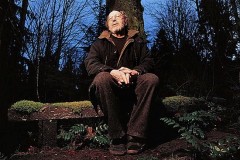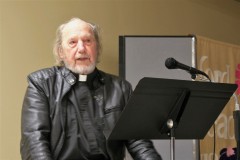International shipping is of the world biggest emitters of polluting and toxic chemicals. Now, scientists are tracking their emissions with satellite data

Enter your favorite tree into Comox Valley Nature’s annual contest by April 1
A portion of Comox Valley Nature’s Tree of the Year contest poster
Enter your favorite tree into Comox Valley Nature’s annual contest by April 1
The deadline for nominating your favourite tree in Comox Valley Nature’s annual Tree of the Year contest is just a few weeks away. People can nominate tree before April using the organization’s online entry form.
Comox Valley Nature (CVN) holds the annual contest to identify and highlight individual trees of significant interest or importance or beauty in the Comox Valley. The goal of the contest is to foster a strong connection with nature, increase awareness of cherished local trees, and raise interest in the value and protection of trees.
Any Comox Valley resident can nominate a tree they love within the Comox Valley Regional District boundaries. To encourage everyone to vote with their feet, CVN will provide possible cycling and walking routes to visit these trees. Typically, the nomination period runs from early January until the end of March.
While our focus is on appreciating all the trees, a winning tree will be chosen by public vote. A small prize is awarded to the nominator of the Tree of the Year, and everyone benefits from learning about these beautiful specimens.
The CVN website suggests that when nominating a tree, a person should consider “their personal attraction to the tree. Is it beautiful or eye-catching? Is it ecologically or economically important? Does it have a unique history, or is it of cultural significance? Whatever your reason for choosing to nominate a particular tree, we invite you to share its story with us!”
HISTORY OF THE CONTEST
The concept began in the Czech Republic over 20 years ago and evolved into the European Tree of the Year Award, organized by the Environmental Partnership Association. It has since spread to several countries in Europe including the United Kingdom, Ireland, Poland, Bulgaria, Spain, Belgium, Estonia, Lithuania, Germany and Slovakia. The presentation ceremony takes place annually around March 21 which is the International Day of Forests.
CVN’s contest was started through the initiative of member Cathy Storey, with the first set of nominations solicited in 2017 and the first winner announced in early 2018. To the best of our knowledge, our contest is unique in North America.
Cathy passed away in December 2020, but her legacy is carrying on. Our 2021 contest is designated in her honour, and a memento in the form of a painting with a tree theme is being created. In addition to a gift basket, the winner of each year’s contest will have the privilege of enjoying the painting in their home for a year.
SUBSCRIBE TO OUR NEWSLETTER
Scientists using satellite data to detect pollution from international shipping industry
BREAKING: Kus-kus-sum purchase funds complete, thanks to province
New funding from the BC Government announced today puts Project Watershed’s Kus-kus-sum fundraising over the top, allowing restoration to begin
Obituary: Fr. Charles Brandt, first Catholic hermit priest in several hundred years
The 97-year-old Roman Catholic hermit priest, Father Charles Brandt died Oct. 24 at the Comox Valley Hospital. This is his obituary.
LATEST UPDATE: Father Charles Brandt funeral service this Friday in Campbell River
Father Charles Brandt, the hermit monk of the Oyster River, has died at age 97
CV watershed virtual forum to explore climate change, landscape restoration
A free three-part virtual seminar will examine the power of collaboration to mobilize and respond effectively to the impacts of climate change on the Comox Valley landscape.
Father Charles Brandt honored by Canadian Museum of Nature
The Canadian Museum of Nature has given Father Charles Brandt their 2020 Lifetime Achievement Award. The Oyster River hermit was nominated by the Comox Valley Land Trust.
Maps will detail impact of sea level rise on Valley coastline
Detailed mapping by the Comox Valley Regional District will identify the coastal areas most vulnerable to sea level rise and provide richer data for engineers and future local government regulations and bylaw changes
Ocean farming: more food, less land, reduced GHG emissions
The climate crisis will force us to produce more food on less land while cutting greenhouse gas emissions. For Bren Smith, director of the non-profit group Greenwave, this transition means expanding our definition of farming to include the ocean
The Week: March for our planet today, but who will take the big, bold steps we need?
The Comox Valley will march at 1 pm today for changes to slow down climate change. But are we really just giving lip service when bolder actions are needed to save the planet?
Comox Valley climate activists join 1,700 discussion events worldwide
At a meeting with nearly 100 Comox Valley climate activists, Will Cole-Hamilton discussed global progress in solar and wind technologies, how the City of Courtenay has addressed climate change and why climate marches are so important





 RESTORATION OF WILDWOOD
RESTORATION OF WILDWOOD SELF-SUSTAINING AND POPULAR
SELF-SUSTAINING AND POPULAR HOW THEY FINANCED IT
HOW THEY FINANCED IT




 Over the next 30 years I cherished occasional visits with Charles when I travelled to Comox Valley. My wife Francis once said to me when I was feeling down, “why don’t you call Charles?” Another time he described to me verbatim, the Buddhist eight-fold path. This was the essence of Charles Brandt —clearheaded sage wisdom magnified by his caring soul and quiet calm presence.
Over the next 30 years I cherished occasional visits with Charles when I travelled to Comox Valley. My wife Francis once said to me when I was feeling down, “why don’t you call Charles?” Another time he described to me verbatim, the Buddhist eight-fold path. This was the essence of Charles Brandt —clearheaded sage wisdom magnified by his caring soul and quiet calm presence.


